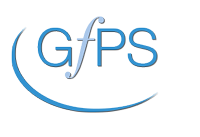Determining the bioburden of medical devices is one way of checking and evaluating the effectiveness of all production hygiene steps on the end product. The term bioburden refers to the microbial contamination of a medical device before it is sterilized.
Bioburden
The bioburden is the sum of all microorganisms from different sources, including raw materials, component manufacturing, assembly processes, the manufacturing environment, assembly and manufacturing aids, cleaning processes and packaging of the finished product.
It is not possible to accurately quantify the microbial load as many factors can influence the determination of bioburden. In practice, the bioburden is determined according to a defined procedure that includes a characterisation of the population in addition to the quantification or estimation of the microorganisms. Due to the wide variety of materials used in the manufacture and construction of medical devices and the associated different surface adhesion of microorganisms, DIN EN ISO 11737-1 presents different process parameters.
The same applies to the huge number of different microorganisms that can occur on medical devices. DIN EN ISO 11737-1 also provides a large selection of appropriate rinsing solutions and culture media, including incubation conditions in various combinations.
The process used at GfPS mbH takes into account the different requirements of microorganisms: slow-growing fungi must be cultivated differently to fast-growing bacteria. Anaerobically growing bacteria are cultivated in the absence of atmospheric oxygen.
The bioburden limits are set by the manufacturer of the products. The mean value and the standard deviation per product group are used to determine the alarm limits. An alarm limit (or action limit) results from the sum of the mean value and twice (or three times) the standard deviation.
Validation of the bioburden method according to DIN EN ISO 11737-1
According to DIN EN ISO 11737-1, the validation of the bioburden method must be carried out in order to demonstrate the suitability of the test method and to assess the suitability of the technique for sampling the microorganisms.
There are two traditional approaches to validate the effectiveness of sampling microorganisms from healthcare products. These approaches are:
- Determination of the recovery rate by means of repetitive recovery: the repeated treatment of a product sample followed by a quantitative assessment of the extent of recovery, with relatively high natural microbial contamination of the product.
Products with moderate to high (e.g. 100 CFU to 1,000 CFU) or high (e.g. > 1,000 CFU) bioburden.
Five non-sterile samples are repeatedly rinsed with the corresponding rinsing solution. A recovery rate can be determined from the ratio between the number of colonies after the first application and the total colony count.
or
- Determination of the recovery rate using the inoculation method (inoculated product): Product inoculation with a known number of microorganisms, followed by a quantitative assessment of the extent of recovery at a low natural contamination rate of the product.
Products with a low, e.g. < 100 CFU or very low, e.g. < 10 CFU bioburden.
For this purpose, five (sterile or low-contaminated) samples are contaminated with a defined microorganism, e.g. Bacillus atrophaeus spores, and subjected to the selected bioburden process after drying. A recovery rate can be determined from the ratio between the number of spores detached from the product and the total number of spores with which the product was contaminated.
A correction factor is determined from both methods described, which is multiplied by the number of microorganisms from the routine bioburden determinations to give an estimate of the actual microbial load.
Validation must be carried out at fixed intervals in accordance with DIN EN ISO 11737-1. The scope is determined by means of a risk assessment.
This may mean that a theoretical analysis is sufficient. Changes to the product, the product groups or the manufacturing processes must be checked and evaluated.
MPN method (Most Probable Number)
The quantitative determination of the microbial load on non-sterile medical devices is an accredited procedure at our institute!
The MPN method is a well-established and fully documented method for assessing the number of viable microorganisms in a product in which microorganisms are randomly distributed.
The method is particularly suitable for products that have a bioburden with a low average count (e.g. liquid products, viscous liquids, powders) or products, such as paper, that have adhesive and liquid-decomposing components from which the adhering microorganisms are difficult to filter/detach.
The procedure consists of taking samples of a test series of a product with different weights containing on average the same number of viable microorganisms in each sample/sub-sample. This procedure results from the standard requirements of ‘random distribution’.
Each sample is analysed individually for the presence of viable microorganisms. This is done by transfer to liquid culture media and incubation. An estimate of the number of viable microorganisms can be made from the frequency of positive tests occurring in a set of parallel samples. The 95 % confidence limits around the estimated value are relatively wide.
Neutralisation of inhibitory substances MST
This test for the detection of neutralisation of inhibitory, or generally antimicrobial properties, demonstrates the validity of the method and performance of routinely determined bioburden.
If the product can be adversely affected due to its physical or chemical properties, a system must be used to neutralise, remove or minimise the effect of any substances released. The effectiveness of such a system must be proven.
Various microorganisms and incubation conditions are tested in order to arrive at a meaningful result.
Guidelines:
- according to DIN EN ISO 11737
- according to FDA BAM Appendix 2
- according to Ph. Eur. 2.6.12
- according to USP <61>
We are happy to support you with your questions about Bioburden at accountmanagement@gfps.de.
